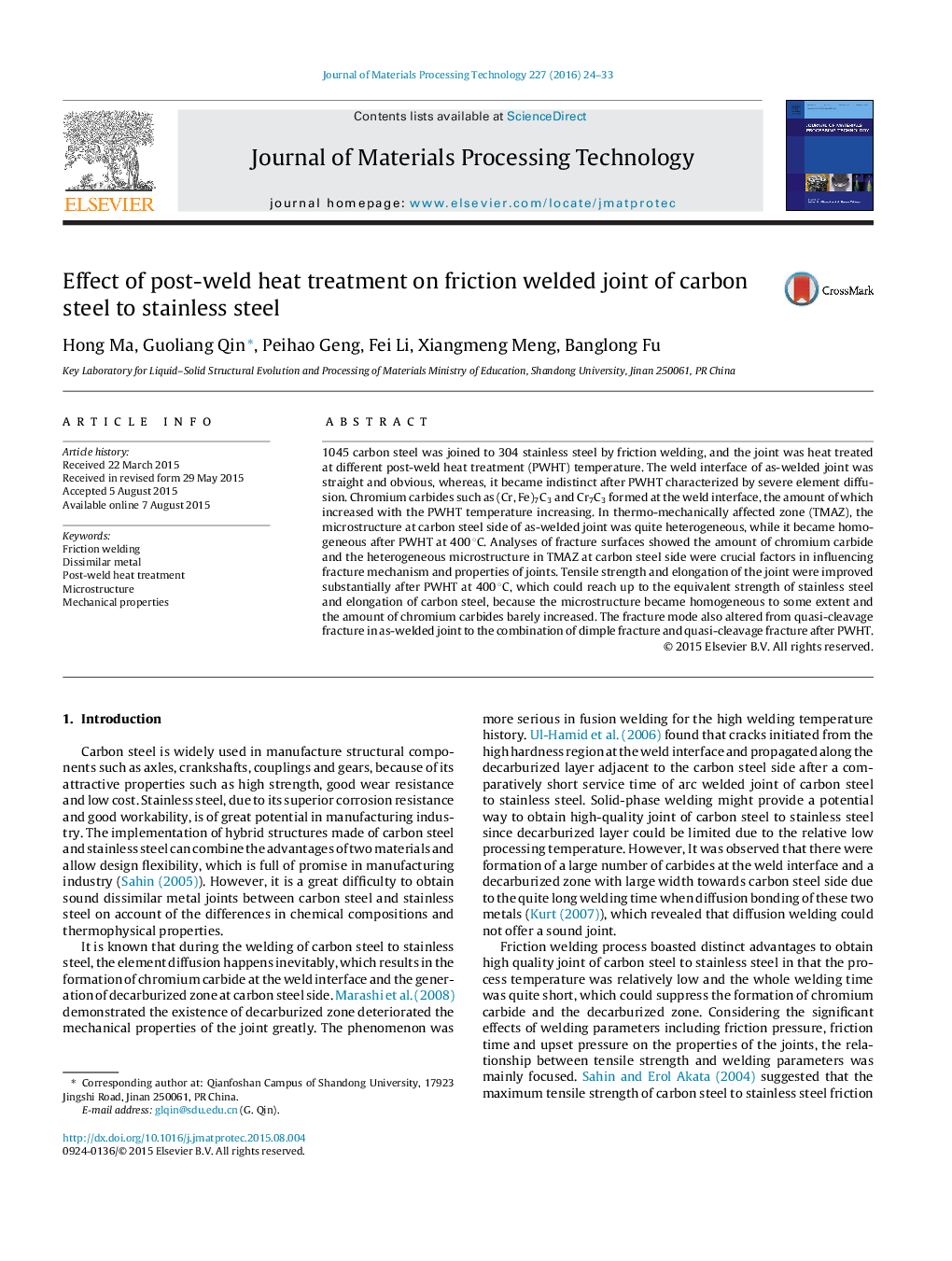| Article ID | Journal | Published Year | Pages | File Type |
|---|---|---|---|---|
| 797923 | Journal of Materials Processing Technology | 2016 | 10 Pages |
1045 carbon steel was joined to 304 stainless steel by friction welding, and the joint was heat treated at different post-weld heat treatment (PWHT) temperature. The weld interface of as-welded joint was straight and obvious, whereas, it became indistinct after PWHT characterized by severe element diffusion. Chromium carbides such as (Cr, Fe)7C3 and Cr7C3 formed at the weld interface, the amount of which increased with the PWHT temperature increasing. In thermo-mechanically affected zone (TMAZ), the microstructure at carbon steel side of as-welded joint was quite heterogeneous, while it became homogeneous after PWHT at 400 °C. Analyses of fracture surfaces showed the amount of chromium carbide and the heterogeneous microstructure in TMAZ at carbon steel side were crucial factors in influencing fracture mechanism and properties of joints. Tensile strength and elongation of the joint were improved substantially after PWHT at 400 °C, which could reach up to the equivalent strength of stainless steel and elongation of carbon steel, because the microstructure became homogeneous to some extent and the amount of chromium carbides barely increased. The fracture mode also altered from quasi-cleavage fracture in as-welded joint to the combination of dimple fracture and quasi-cleavage fracture after PWHT.
Graphical abstractFigure optionsDownload full-size imageDownload as PowerPoint slide
